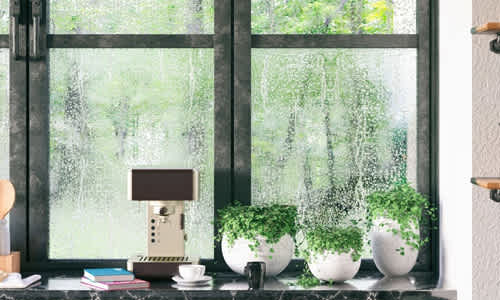12 Tips For Your Next Home Colour Revamp

1. Clear out
If possible, remove all furniture from the room. This allows you to move easily about the space and minimise the chance of damage to your belongings. If you can't remove everything, move items to the centre of the room and cover them with plastic drop sheets. Also take down any window coverings.
2. Fix cracks and holes
Remove unused screws or picture hooks from walls and window frames. Use an appropriate filler to patch any small cracks and holes.
For plasterboard walls and timber frames, use a product such as Selleys Spakfilla Rapid to fill holes.
For masonry walls, use a product developed for such use -- try Selleys Mortar Works. Always slightly overfill the hole.
For mortar filler, pat with a sponge to get a textured finish and let dry. For timber or plasterboard filler, let dry, then lightly sand for a smooth finish.
3. Squeeze and fill
For larger gaps between cornices or skirtings and walls, you need a flexible filler such as Selleys No More Gaps. Flexible fillers are designed to cope with slight movement so they won't crack, and most use a caulking gun for application. To operate, use a blade to trim the nozzle tip at a 45° angle.
Load into the caulking gun and squeeze the trigger until pressure forces filler out of the nozzle. Hold the gun at a 45° angle to the gap. Keep pressure even and filler moving to fill in one action.
After each application, spray filler with soapy water and wipe away excess with your finger or a curved plastic scraper. Allow to dry.
4. Clear flakes and bubbles
Your tool of choice for removing dry, flaky paint is a scraper. Choose one best suited to your size and weight, as well as the area you're cleaning up. Where a ceiling has flaked in a line, usually along a join, scrape the area until all loose paint is removed.
Fill gaps with a suitable filler and let dry. Disguise the join with a length of stress crack tape, apply a finishing compound over the top, let dry, then sand lightly with a fine-grit sanding pad.
5. Know your paint
Before rolling any paint on your walls, you need to know whether the existing paint is water-based (acrylic) or oil-based. A quick way to test what you're dealing with is to dampen a corner of a clean rag with methylated spirits, then rub the wall with the wet rag. If paint transfers to the rag, it's acrylic. If the rag is clean, it's likely to be oil-based.
6. Seal the deal
When filler is dry and sanded, seal the surface before applying a topcoat. There are many undercoats to choose from to suit your needs, or you can use an all-in-one product such as Dulux 1 Step Primer, Sealer & Undercoat, which comes in an oil-based or acrylic formula.
For stained timber surfaces, such as doors and skirtings, it's best to use a stain blocker to lock in the tannins so they don't bleed through to your topcoat. Stain blocker comes in an oil- or shellac-based formula.
7. Don't lose it
If where you're painting requires you to remove hardware such as curtain-rail fittings or doorhandles, take a minute to place all the bits and bobs into a plastic bag or container and put in a safe spot. That way, when it comes to putting them back, the pieces will all be in the one convenient place.
8. Gloss over
Doors and trims are traditionally painted in semi-gloss or gloss finishes and require a little more attention to prepare them for a topcoat. First, sand surfaces until they look dull enough to give tooth for a fresh coat to stick. Next, apply a fresh coat of oil-based enamel straight over the existing enamel or, if switching to an acrylic topcoat, first coat with a suitable undercoat.
9. Cover up
Apply painter's tape wherever you want a sharp edge or don't want paint to touch, such as around power points, doors and window frames, and along the front of skirting boards.
10. Begin with the ceiling
When you're ready to paint, start from the top. Use a brush on cornices and detailed plasterwork and a roller on a pole to finish the rest. There are plenty of ceiling paints on the market, typically flat and white with no sheen.
Ideally, you can reduce ladder time by selecting a paint that covers in one coat. However, you'll need to treat heavy stains -- such as smoke or soot -- first by applying a stain blocker to prevent them bleeding through your freshly painted ceiling. For wet areas, choose a ceiling paint with mould inhibitors.
11. Go up the walls
After you've filled and sanded gaps, vacuum up any dust and debris. Wash walls with sugar soap (household cleaners leave a residue) to remove grease and grime, and allow to dry. Paint choices are endless, so make use of test pots to decide on colour. Cut in at ceilings, skirtings, corners, doors and windows using a brush, then use a roller on a pole to finish the rest.
Coverage counts, so paint the required number of coats (usually two topcoats) and let dry between each for best results. To work out how much paint you'll need, multiply the height and width of each wall, add together the figures for each wall, then subtract the area of the windows and doors. Divide the total by 16 (1L of paint will cover about 16m2), then multiply by two (for two coats).
12. Be sheen-smart
Ever wondered why the sheen level of paint matters? Well, it can make or break a job, as sheen or gloss dramatically changes the finished look. Flat and low-sheen paints will cover imperfections, so are perfect for ceilings and walls, while gloss will show every knock and bang. That said, gloss paints tend to be harder wearing, especially enamels, so are ideal for doors and trims.
A quick tip: always let paint dry before deciding it's too glossy.
Bonus: Quick pointers about your tools
- Buy the best-quality rollers and brushes you can afford. The better the tool, the better the finish. Wash them before use to remove any fuzz or debris and allow to dry.
- Straight-edged brushes are multi-use while angled- end brushes are for cutting in -- it's really a personal choice. Whichever way you go, use a 75mm brush for cutting in at walls and a 50-60mm brush for cutting in at trims. n Use short nap (6mm) rollers for smooth surfaces and gloss paints, medium (12mm) for low-sheen or flat finishes, and long (20mm) for painting textured surfaces, such as brick.
- A standard roller width is 270mm, so check it fits your tray before buying.
- Mini rollers are ideal for painting small projects or small spaces.
- If you're not sure how much paint you'll need Airtasker have a really handy paint estimation tool.
- A good roller handle and pole are a great investment, especially if you have a lot of painting to get through!
- Drop sheets come in cloth or plastic. Cloth drop sheets tend to be more non-slip and are likely to last longer.
- A flat-faced paint stirrer or paddle is an inexpensive must-have. Or, at a pinch, you can always swipe your littlie's school ruler!
- When masking up, always use good-quality painter's tape. You won't regret it, especially for detailed areas or projects that require a sharp line. Cheaper paper tapes tend to tear, bleed or leave a sticky residue.
- Check the clean-up instructions on your tin when buying the paint -- that way you can pick up turps or metho as required for oil-or shellac-based paints
You may also like
News, tips and offers straight to your inbox.


